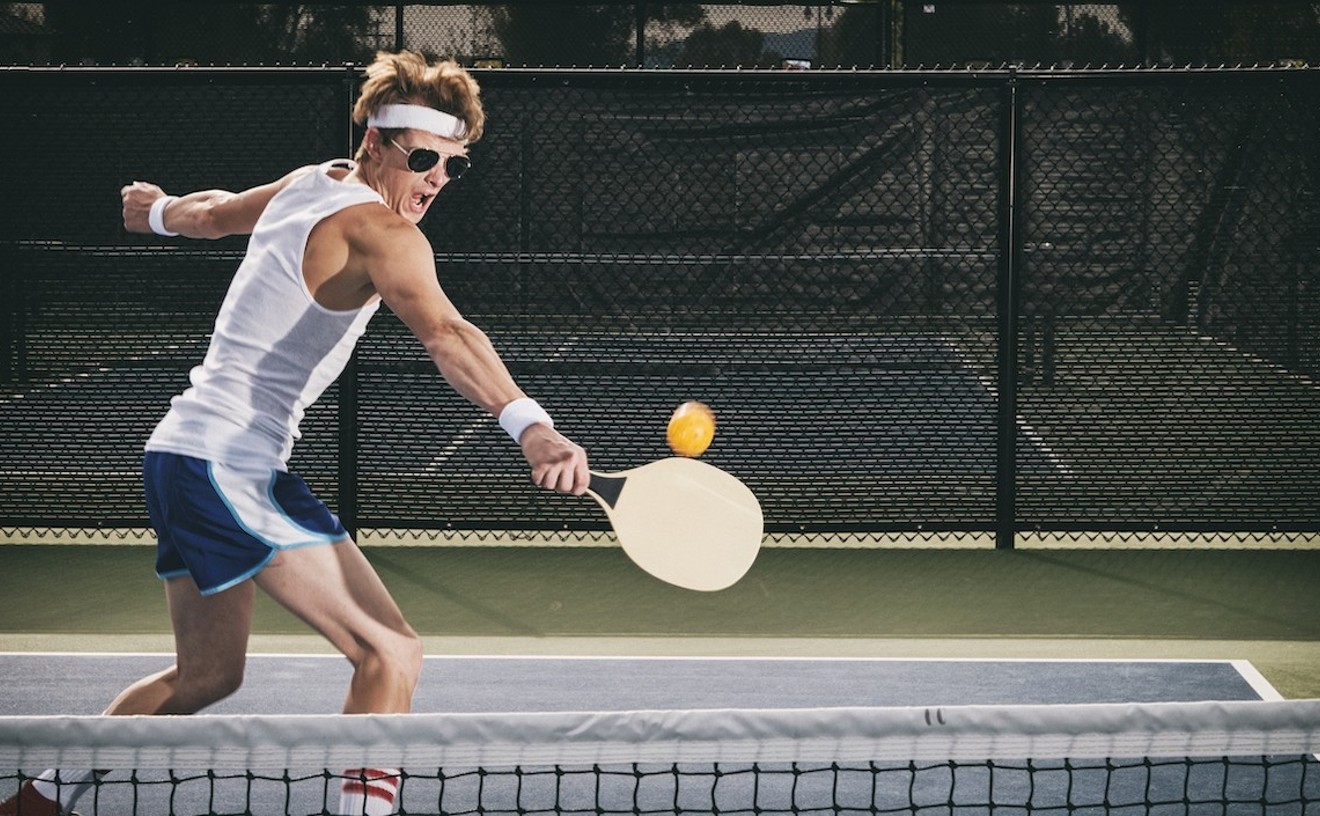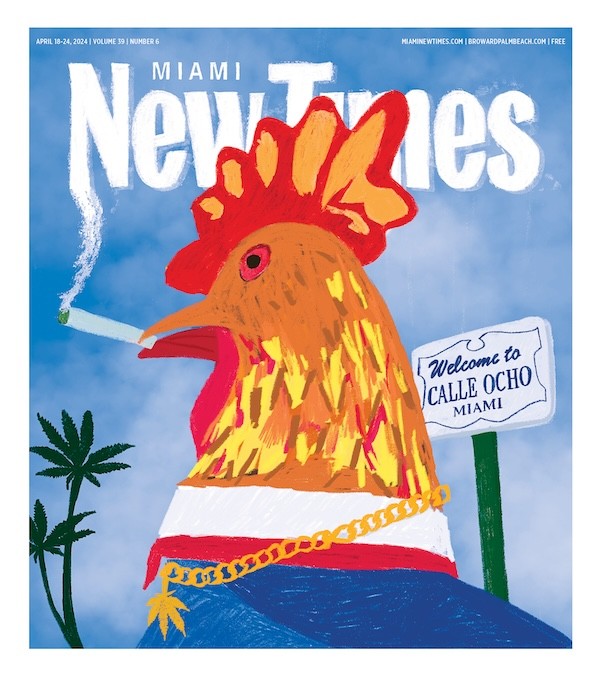Frida Kahlo and Diego Rivera's tumultuous marriage is the stuff of legend. In a relationship situated somewhere between codependent and abusive, the Mexican painters married in 1929, divorced in 1939, and remarried in 1940. Though deeply fraught and troubled, their relationship has an enduring appeal in large part because of the strikingly brutal self-portraits Kahlo produced throughout her short lifetime.
But the deep psychological examination Kahlo brought to her marriage isn't echoed in Fort Lauderdale's current exhibition, "Frida Kahlo and Diego Rivera From the Jacques and Natasha Gelman Collection & 20th Century Mexican Art From the Stanley and Pearl Goodman Collection."
The cumbersome title says quite a bit about its direction. This is a show meant to celebrate two private collections, and while the exhibition does that quite well, it seems to have little interest in the radical personal and political lives of the painters.
Which is a shame, because the Gelman collection in particular is filled with some of Kahlo's most striking self-portraits and some of Rivera's most important work. The Goodman collection, meanwhile, is rich in works by Mexican modernists like Rufino Tamayo, muralist David Alfaro Siqueiros, and Francisco Toledo, artists who are often ignored in American museums.
But if you're looking to be guided through one of art history's most turbulent yet profitable marriages or trying to make sense of the deeply political works Rivera, Kahlo, and their counterparts produced, you won't find it at the NSU Art Museum Fort Lauderdale.
One challenge to the show is the wide visual gap between the pair. Rivera painted large-scale murals, populated by anonymous Mexican laborers, radically suggesting that an impoverished worker was just as worthy a subject of art as a wealthy patron. In Kahlo's relatively small oils, her subject matter was the result of deep, inward reflection. Rivera's murals loudly shout of their politics, whereas Kahlo's self-portraits unnervingly capture her psychological turmoil.
Their work is so different, their styles and approaches so disparate, that their paintings need a bit of contextualization. The NSU Art Museum fails to tell the story of their rocky marriage, making the exhibition rather opaque.
Also missing is any mention that the work on display was born of the sociopolitical upheavals of the Mexican Revolution or that Kahlo and Rivera were as united by their deep commitment to communism as they were by art. There's no nod to Kahlo's affair with Leon Trotsky, the dissident but ardent communist who would later end up assassinated — via an ice ax through his skull — only a few doors down from the couple. There's also no mention of Rivera and Kahlo's quick decision to break from Trotskyism and affirm their commitment to his political rival, Joseph Stalin.
It's a strange evasion and, intentionally or not, ironically sweeps class-based politics under the rug in favor of a narrative focused on the collecting habits of the wealthy. But if the museum itself refuses to explicate the personal and political meanings behind much of the work, the paintings themselves often do the job.
The collections that NSU Art Museum has borrowed from are truly spectacular. Taken together, both collections present a wide range of artists working in Mexican modernist style.
Included are two of Rivera's sketches for a large-scale mural of the faculty of chemical scientists at the Universidad Nacional Autónoma de Mexico in Mexico City (1933). The graphite sketches include Rivera's handwritten instructions for measurements and dimensions — vivid presentations of the hard, physical work of large-scale mural painting. The physicality of Rivera's renowned mural work is evident in the sketches but intentionally invisible in the final product. And seeing the physical labor that underpinned Rivera's work teases out some of the central tensions between the painter and his wife.
Labor itself is a consistent theme in Rivera's smaller paintings. The exhibition has numerous examples of Rivera's obsession with painting the common laborer: a small Picapedrero ("stone worker") from 1945 and an impressionistic depiction of farmers, including the watercolor Pareja Campesina ("farm couple") from 1933.
Alfredo Martinez Ramos' Zapatista (1931) is one of the more compelling explorations of labor and politics in the show. The mixed-media piece features an anonymous Zapatista — a member of the group committed to overthrowing Porfirio Diaz and later a key force in the Revolution — painted on a discarded newspaper page of the Los Angeles Times. In Ramos' rendering, the Zapatista is still prepared for battle. He holds a long rifle, and bullet rounds are draped across his chest. The irony of Ramos' painting is that the Revolution is nearly two decades past, and he has painted the Zapatista on the want ads of an American newspaper.
If Rivera and the Mexican muralist were focused on labor — both their own and the more humble labor of the average Mexican — then Kahlo's work eschews those themes entirely. It feels a bit disjointed to move from one room filled with clearly progressive, socialist paintings into Kahlo's world, a surreal place inhabited by disfigured bodies, ominous animals, and creepy dolls, without any clear transition.
Yet Kahlo's work really is the star of NSU Art Museum's show. Her pieces from the Gelman collection show Kahlo as a diverse artist working in a variety of media, a painter who was interested in applying her surrealist vision to more than herself. Experimental Kahlo is on display in late collages including Collage con dos Moscas (Collage With Two Flies) (1953), a work that looks purposefully infantile. The pictures of flies, cut from magazines, have been haphazardly taped on, while her name is scribbled in large, clunky letters across the top like a child proud of an art project.
Kahlo's gifts as a portrait painter are evident in a stunning Portrait of Diego Rivera (1937) and another of collector Natasha Gelman (1943). Kahlo's bust-length portrait of Gelman is heavily contoured, and the subject doesn't make eye contact, looking disinterested with the process. It's a vast departure from Rivera's portrait of the same patron done in the same year. In Rivera's more sensuous treatment, Gelman lies on a couch, her arms perched beneath her, suggestively modeled after the form of the calla lilies arranged behind her.
But it's Kahlo's self-portraits that steal the show. In the most familiar pieces, Rivera looms large in Kahlo's artistic imagination. He seems, at times, as present in her self-portraits as Kahlo herself. There are seven self-portraits in the exhibition and, in them, a wide-ranging display of both Kahlo's talent as a painter and also the varying ways in which she struggled with her own identity. The familiar iconography are all here: braids and monkeys, jewelry, eyebrows all used to enhance her signature intensity.
In Self-Portrait With Bed (Me and My Doll) (1937), Kahlo sits on her bed, hands folded in her lap, and beside her sits a creepy, nude baby doll in place of a child. The painting, done on metal, has the shine of a religious ex-voto painting, which casts Kahlo and her doll in the venerated role of saint and child.
In her large self-portrait Diego on My Mind (Self-Portrait as Tehuana) (1943), she wears the white headdress of Tehuana, the head of a matriarchal community, asserting her power and independence. Kahlo's message of liberation, however, is undercut by an image of Rivera, who appears tattooed on her forehead.
There is a push and pull in Kahlo's detailed self-portraits. She is unafraid of conflicting images of self and to explore ugly internal conflict and psychological struggles. No matter how familiar Kahlo's self-portraits might be, no matter how many times you've seen them, they never cease to be striking.
The NSU Art Museum seems to understand, at least, that the self-portraits are the strength of the exhibition. There's an entire room dedicated to them, and seeing them all together is dizzying and disturbing.
The paintings are so good that they alone make the show worth the drive. But the exhibition itself is disjointed. There's no attempt to integrate the two separate private collections, no attempt to tell the fascinating stories that drove Kahlo, Rivera, and their counterparts to art. There's no attempt, even, to explain the politics that tied the Mexican modernists together.
While many of the paintings in the exhibition are high-quality and stunning, they leave you wishing for more.
"Frida Kahlo and Diego Rivera From the Jacques and Natasha Gelman Collection and 20th Century Mexican Art From the Stanley and Pearl Goodman Collection"
Through Sunday, May 31 at the NSU Art Museum Fort Lauderdale (1 E. Las Olas Blvd., Fort Lauderdale). The museum is open Tuesday to Saturday 11 a.m. to 5 p.m., Thursday 11 a.m. to 8 p.m., and Sunday noon to 5 p.m. Admission costs $12 for adults, $8 for seniors and military, $5 for students, and is free for children under 12. Visit nsuartmuseum.org.










